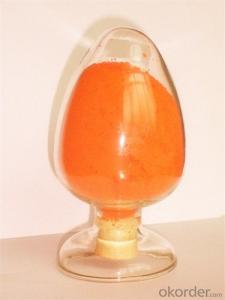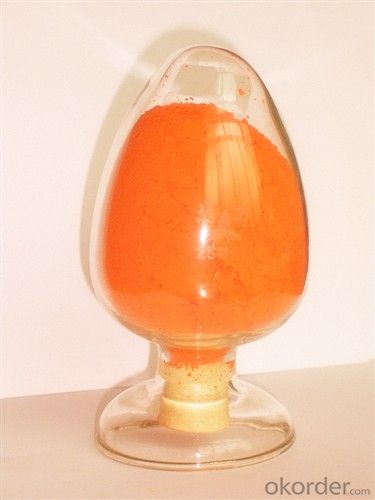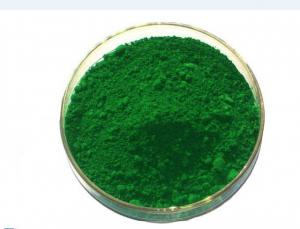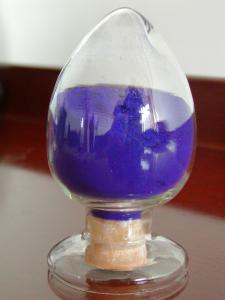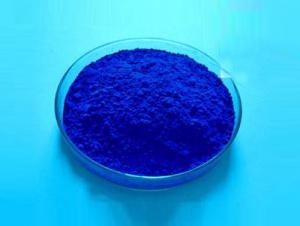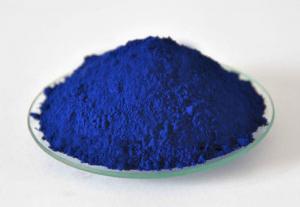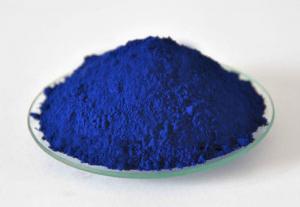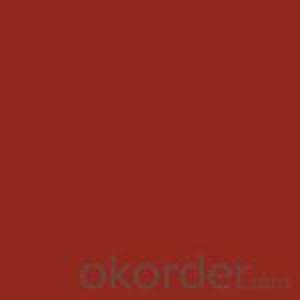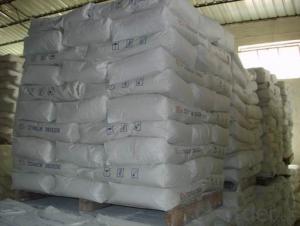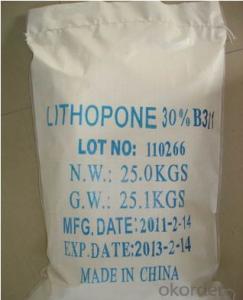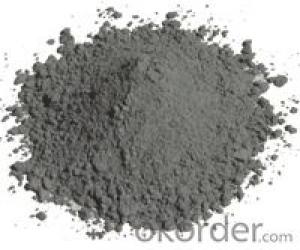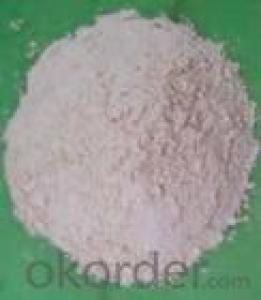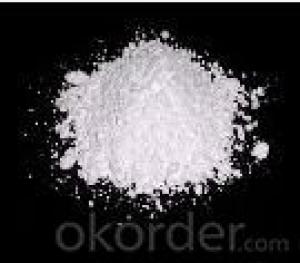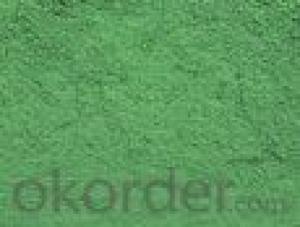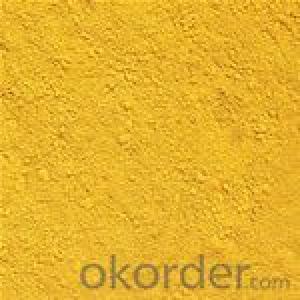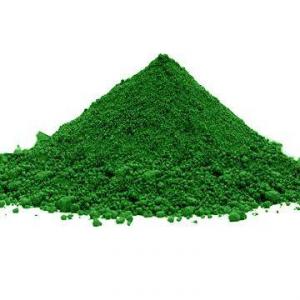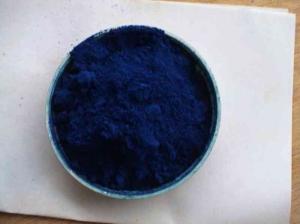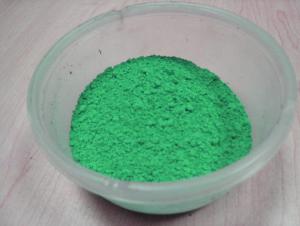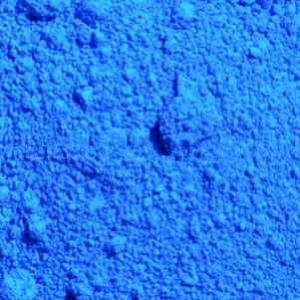Iron-titanium compound powder 808
- Loading Port:
- China Main Port
- Payment Terms:
- TT OR LC
- Min Order Qty:
- -
- Supply Capability:
- -
OKorder Service Pledge
OKorder Financial Service
You Might Also Like
Quick Details
Use: Suitable for aqueous, oily and various types of base materials to produce non (low)-toxic antirust paint, primer and integrated antirust paint. This product can completely or partly replace red lead antirust pigment.
Performance
1. Compared with other antirust paint, it has significantly improved dispersion property, stability, anti-sinking property and antirust performance.
2. 808 composite antirust pigment has obvious price advantage compared with other antirust pigments due to its low base material price.
3. Compared with red lead, 808 composite antirust pigment has much lower heavy metal content and is a new environmentfriendly product. It is easy to use by spraying or brushing, and is an ideal new antirust product to replace red lead.
Specifications
Technical index
Item Index Appearance Orange (yellow) powder Sieve residue (sieve mesh-400)%≤ 1 Density 27℃ g/cm3 3.0~4.2 Oil absorption g/100g ≤ 13~28 Water solubles g/100g ≤ 1 Volatile matter (105℃)%≤ 1 Aqueous suspension PH value 7.0~9.5 Phosphorus pentoxide% ≥ 30
Using method
Produce based on conventional antirust paint production process.
Recommended dosage
Recommended dosage is 20%-40%.
Packing
Double-layer plastic packaging, 25kg/bag - 40kg/bag.
Storage
Keep ventilated and dry, it can be stored for a year without deterioration
- Q: Why do plants contain so many pigments?
- Chlorophyll is the respond and here is why - this pigment provides flowers their relative eco-friendly shade because of the fact flowers undergo photosynthesis to furnish themselves with glucose for capacity. in this technique, flowers soak up photograph voltaic capacity from the sunlight. Chlorophyll has a eco-friendly pigment for the reason that's the pigment that attracts photograph voltaic capacity the main effectively. consequently offering the plant with greater photograph voltaic capacity, which would be converted into chemical or warmth capacity by way of cellular respiratory, yet that's an entire distinctive tale.
- Q: Know this ounds kinda obvious but just wanted to confirm, is there more pigment in the middle of the beetroot than on the edges?
- I've known it to be in the skin and thats from a cooking point of view.
- Q: does photosythesis requier pigment moulecuels?
- Photosynthesis requires Chlorophyll, which is composed of a mixture of pigments like chlorophyll a, chlorophyll b and xanthophyll. These pigments allow certain wavelengths of light to be used for photolysis, a required stage of the photosynthetic process.
- Q: a question on my photosynthesis test review...=_=
- Pigments such as chlorophyll that are green color the plant using raw materials.
- Q: I have been looking over the internet and have yet to find the details I need. Such as the function and development of Pigments.
- A pigment is a material that changes the color of light it reflects as the result of selective color absorption. This physical process differs from fluorescence, phosphorescence, and other forms of luminescence, in which the material itself emits light. Many materials selectively absorb certain wavelengths of light. Materials that humans have chosen and developed for use as pigments usually have special properties that make them ideal for coloring other materials. A pigment must have a high tinting strength relative to the materials it colors. It must be stable in solid form at ambient temperatures. You can thank me later.
- Q: i want to get mac melon pigment but i dont know what other eyeshadows to pair and blend it with. im looking for an everyday look. also what brushes to use with pigments?
- With the Melon pigment, I would recommend using warm, chocolate copper, bronze types of colors. It will provide a nice contrast to the melon while giving your eyes some added depth and definition. As far as brushes go, I like using the 252, large shader brush. This brush picks up pigment nicely and it has nice compressed/dense bristles so you can manipulate and lay the pigment down with greater ease. I like the #286 The dual fiber blending brush for pigments as well. It's made of natural fiber and synthetic fiber. This is a great brush because you really get 2 brushes in 1. With this 'blending' brush you can also use it for targeted color deposits and the synthetic fibers won't suck up what you just laid down and you will get a flawless, beautifully blended eyeshadow application.
- Q: explain how the pigments in colored objects such as clothes differ from plant pigments
- Green pigments absorb light in the red and blue parts of the spectrum and reflect the green back to our eyes. The major functional difference between chlorophyll and say jade green is that only the chlorophyll in living systems can transfer the absorbed light energy and the excited electron to another molecule, thus trapping it. In biology, pigment is any material resulting in color in plant or animal cells which is the result of selective absorption. Some biological material has so-called structural color, which is the result of selective reflection or iridescence, usually done with multilayer structures. Unlike structural color, pigment color is the same for all viewing angles. Nearly all types of cells, such as skin, eyes, fur and hair contain pigment. Butterfly wings typically contain structural color, although many of them contain pigment as well. Creatures that have deficient pigmentation are called albinos. In the coloring of paint, ink, plastic, fabric and other material, a pigment is a dry colorant, usually an insoluble powder. There are both natural and synthetic pigments, both organic and inorganic ones. Pigments work by selectively absorbing some parts of the visible spectrum (see light) whilst reflecting others. A distinction is usually made between a pigment, which is insoluble, and a dye, which is either a liquid, or is soluble. There is no well-defined dividing line between pigments and dyes, however, and some coloring agents are used as both pigments and dyes. In some cases, a pigment will be made by precipitating a soluble dye with a metallic salt. The resulting pigment is called a lake.
- Q: Can somebody answer this in AP BIO language please
- A pigment molecule absorbs at specific wavelength(s), meaning that when light of a specific wavelength is incident to the molecule only certain wavelengths are absorbed while others are transmitted. The spectrophotometer emits monochromatic light (light of only one wavelength) which passes through the pigment molecule and a detector determines the amount of light that is either absorbed or transmitted by the sample. This is done at wavelengths from the UV (180-330 nm) to the visible (330-700 nm) and the light that is either transmitted or absorbed is detected by the spectrophotometer and is able to be graphed with absorbance representing the y-axis and wavelength representing the x-axis. The resultant graph will depict the absorption spectrum of that particular pigment molecule. Hope that helps.
- Q: (After the fifteenth century)
- Pigment is color in powder form. An example is lamp black; it was first made from the soot of kerosene lamps ground fine. Binder is a substance used to hold pigment together and make it adhere; in the previous example, linseed oil would be the binder for the lamp black pigment. Vehicle is a medium acting as a solvent, carrier, or binder for paint; turpentine or mineral spirits would be a vehicle but so would linseed oil as well to help dilute the paint and help it cover a large area. Hope that helps and thanx.
- Q: the absorption spectrum and the range of light reflected by each
- A okorder /... gives the spectra (Action and Absorption)
Send your message to us
Iron-titanium compound powder 808
- Loading Port:
- China Main Port
- Payment Terms:
- TT OR LC
- Min Order Qty:
- -
- Supply Capability:
- -
OKorder Service Pledge
OKorder Financial Service
Similar products
Hot products
Hot Searches
Related keywords
